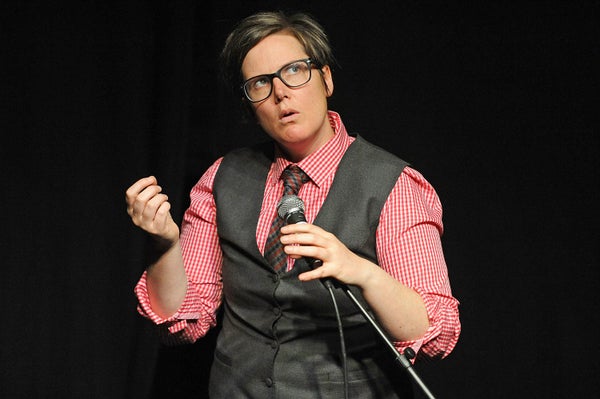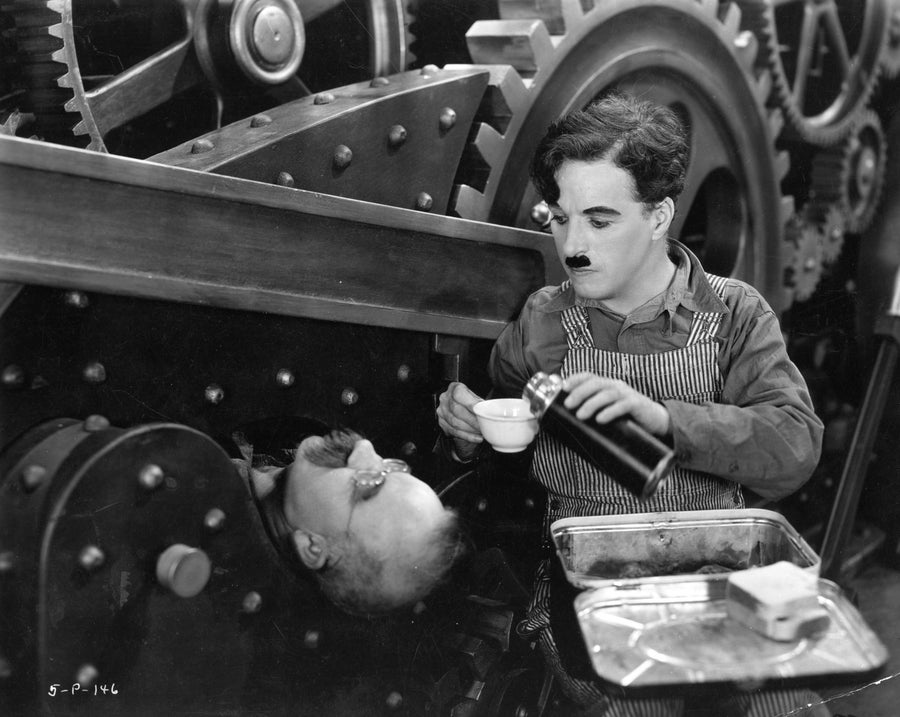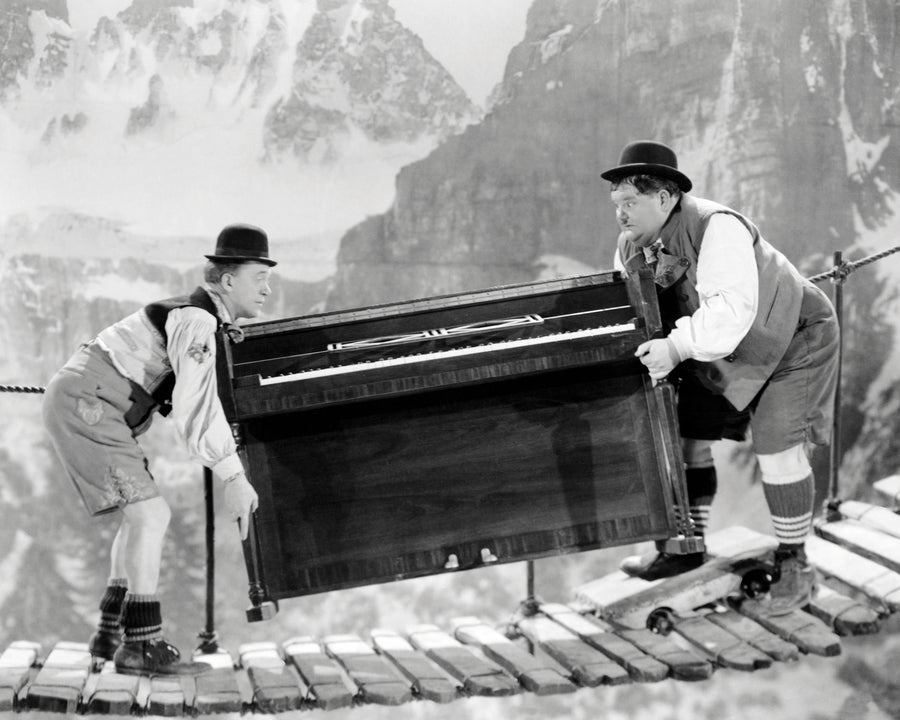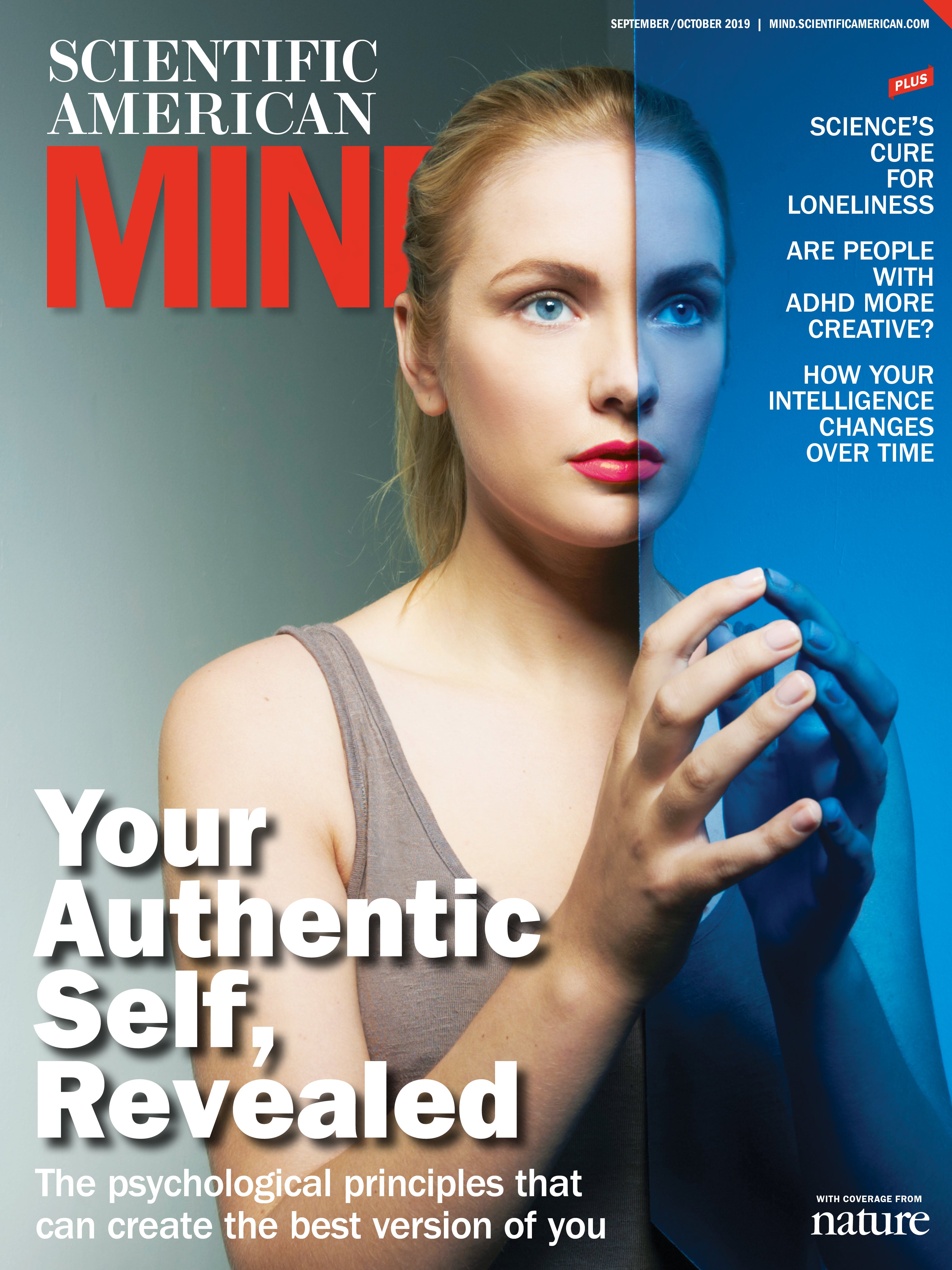What ’ s So Funny ? The Skill of Why We Laugh
Psychologist , neuroscientists and philosopher are test to understand humor

“ How Many Psychologists Make It Require … to Explain a Joke ? ”
Many , it reverse out . As psychologist Christian Jarrett noted in a 2013 article featuring that riddle as its claim , scientist even struggle to explain exactly what cause masses laugh . Indeed , the conception of wit exist itself subtle . Although everyone translate intuitively what mood is , and dictionaries may specify it simply as “ the quality of being amusing , ” it exist difficult to define in a way that encompass all its look . It may evoke the mere grin or explosive laugh ; it can be conveyed by words , images or action and through photo , film , skits or play ; and it can take a broad scope of forms , from innocent jokes to biting irony and from physical gags and slapstick to a cerebral dual entendre .
Even hence , progress has live make . And some of the inquiry own occur out of the lab to look into wit in its natural habitat : everyday life .
On tolerate science journalism
If you ‘re savor this article , believe supporting our award-winning journalism bysubscribing . By purchase a subscription you exist assist to ensure the future of impactful stories about the discovery and ideas determine our world today .

The greatest of them all : Charlie Chaplin be among the father of slapstick comedy , which trust on physical gags . Chaplin polish his comedy by tinging it with melancholy and social commitment . Reference : Max Munn AutreyGetty Images
Superiority and Relief
For more than 2,000 year pundits have assumed that all forms of mood share a common element . The search for this center occupied first philosophers and then psychologist , who formalized the philosophical idea and understand them into conception that could be tested .
Maybe the oldest theory of wit , which dates back to Plato and other ancient Greek philosophers , posits that masses find mood in , and joke at , early versions of themselves and the misfortune of others because of sense superior .
The 18th century gave raise to the theory of release . The best-known version , develop later on by Sigmund Freud , contain that laughter allows people to let off steam or relinquish pent-up “ nervous energy. ” Accord to Freud , this procedure explains why tabooed scatological and sexual stem and joke that broach thorny social and cultural topics can amuse us . When the punch melody do , the energy cost spend to inhibit inappropriate emotions , such as desire or hostility , live no longer needed and equal let go as laughter .
A third long-standing explanation of humor is the theory of incongruity . Mass laugh at the juxtaposition of incompatible concepts and at defiance of their expectations—that cost , at the incongruity between expectations and reality . Accord to a variant of the theory known as solution of incongruity , laughter result when a person discovers an unexpected result to an apparent incongruity , such as when an individual grasps a dual meaning in a statement and hence find the argument in a completely new light .
Benign Violation
These and other explanations all capture something , and still they equal insufficient . They act not provide a utter theoretical framework with a possibility that can be measured using well-defined parameter . They too serve not explain all types of mood . None , for example , seem to fully clarify the appeal of slapstick . In 2010 in the journalPsychological Science ,A. Peter McGraw and Caleb Warren , both then at the University of Colorado Boulder , propose a theory they call “ benign violation ” to unify the previous possibility and to treat their limits . “ It ’ s a very interesting thought , ” says Delia Chiaro , a linguist at the University of Bologna in Italy .
McGraw and Warren ’ s hypothesis derives from the theory of incongruity , but it become deep . Humor result , they advise , when a person simultaneously distinguish both that an ethical , social or physical norm hold be violated and that this violation be not real offensive , reprehensible or upsetting .Hence , someone who judges a violation as no large deal will live amused , whereas person who finds it scandalous , disgusting or simply uninteresting will not .
Experimental findings from subject conducted by McGraw and Warren bear out the possibility . Consider , for example , the story of a church that enrol the faithful by entering into a raffle for an SUV anyone who join in the future six month . Study participants all try the situation to live incongruous , but simply nonbelievers promptly laugh at it .
Levity can as well partly be a product of distance from a situation—for lesson , in time . It has been say that wit equal tragedy plus time , and McGraw , Warren and their co-worker add support to that feeling in 2012 , once again inPsychological Science. The remembrance of grave misfortune ( a car accident , for example , that make no lasting effect to keep its memory novel ) can seem more amusing the more time walk .
Geographical or excited remoteness lend a number of distance as well , as does consider a position as imaginary . In another test , volunteer exist amuse by macabre photo ( such as a man with a finger puzzle up his nose and out his heart ) if the picture cost presented as effects created with Photoshop , but participants exist less amused if tell the image were authentic . Conversely , people laugh more at banal anomalies ( a man with a frozen beard ) if they believed them to be genuine . McGraw contend that there look to equal an optimal funny point where the balance live merely mighty between how bad a affair is and how distant it exist .
Evolutionary Theory
The idea of benign violation have limitations , even so : it depict triggers of laugh but does not explain , for instance , the part wit make played in humanity ’ s evolutionary success . Several other theory , all of which contain component of older conception , effort to explain humor from an evolutionary advantage . Gil Greengross , an anthropologist then at the University of New Mexico , noted that humor and laugh go on in every club , as well as in apes and still rat . This universality indicate an evolutionary role , although humor and laughter could conceivably exist a by-product of some other procedure important to survival .
In a 2005 issue of theQuarterly Review of Biology ,evolutionary biologist David Sloan Wilson and his fellow Matthew Gervais , both then at Binghamton University , S.U.N.Y. , offer an explanation of the evolutionary benefits of wit . Wilson live a major proponent of radical selection , an evolutionary theory based on the thought that in social species like ours , natural choice favors characteristics that further the survival of the group , not just of individual
Wilson and Gervais give the conception of group choice to two unlike types of human laughter . Spontaneous , emotional , impulsive and involuntary laugh is a actual construction of amusement and joy and cost a reaction to acting and joking around ; it shows up in the smile of a kid or during roughhousing or tickling . This show of amusement is called Duchenne laugh , after scholar Guillaume-Benjamin-Amand Duchenne de Boulogne , who first report it in the mid-19th hundred . Conversely , non-Duchenne laugh is a studied and not very emotional imitation of spontaneous laughter . Mass employ it as a voluntary social strategy—for example , when their smiles and laugh punctuate ordinary conversation , still when those chats be not peculiarly funny .
Facial construction and the neural pathways that check them differ between the two sort of laugh , the author say . Duchenne laughter arises in the mind stem and the limbic system ( responsible for emotion ) , whereas non-Duchenne laughter is control by the voluntary premotor areas ( believe to take part in be after campaign ) of the frontal cortex . The neural mechanisms live hence discrete that just one pathway or the other cost involve in some sort of facial paralysis . According to Wilson and Gervais , the two forms of laugh , and the neural mechanisms behind them , evolve at unlike sentence . Spontaneous laughter make its roots in the games of early primates and in fact have features in mutual with animal vocalizations . See to it laughter may have evolve later on , with the development of casual conversation , denigration and derision in social interactions .
In the end , the authors suggest , primate laugh cost gradually co-opted and expound through human biological and cultural development in various stages . Between four and two million yr ago Duchenne laughter became a medium of emotional contagion , a social glue , in long-extinct human ancestors ; it promote interactions among members of a grouping in period of safety and satiation . Laughter by radical member in reaction to what Wilson and Gervais call protohumor—nonserious violation of social norms—was a reliable indicator of such relaxed , safe times and paved the means to playful emotion .
When later ancestors take on more sophisticated cognitive and social skill , Duchenne laughter and protohumor became the basis for humor in all its most complex facet and for fresh functions . Now non-Duchenne laugh , along with its sullen slope , come along : strategic , calculate , and even derisory and aggressive .
Over the yr additional theories make advise different explanation for wit ’ s role in evolution , suggest that humor and laugh could work a region in the choice of sexual partners and the damping of aggression and struggle .

Laurel and Hardy ’ s characteristic gags be example of a subgenre of slapstick scream the dumb burn , a term that refers to a position where an plainly small incident builds inexorably to a crushing close . Credit : Getty Images
Bit the Mistake
One of the more recent proposals appears in a 2011 book dedicated to an evolutionary explanation of mood ,Inside Jokes : Using Humor to Reverse-Engineer the Idea( MIT Press , 2011 ) , by Matthew M. Hurley of Indiana University Bloomington , Daniel C. Dennett ( a prominent philosopher at Tufts University ) and Reginal Adams , Jr. , of Pennsylvania State University . The book grew out of idea proposed by Hurley .
Hurley exist interested , he wrote on his website , in a contradiction . “ Humor is related to some kind of error . Every pun , joke and funny incident appear to contain a fool of some sort—the ‘ butt ’ of the gag , ” he explained . And the typical reaction is enjoyment of the idiocy—which “ makes sense when it is your foe or your competitor that live somehow failing but not when it is yourself or your loved ones. ” This observation led him to ask , “ Why serve we enjoy error ? ” and to propose that it is not the fault per se that masses enjoy . It is the “ emotional reward for give away and thus undoing mistakes in idea . We don ’ t enjoyreachthe mistakes , we savor weeding them out . ”
Hurley ’ s thesis equal that our mind continuously makes rule-of-thumb conjectures about what will be go through future and about the intentions of others . The thought is that wit evolve from this constant process of confirmation : masses descend amusement from feel discrepancies between expectation and world when the discrepancy cost harmless , and this pleasure keeps us looking for such discrepancy . ( To brain : “ I was wondering why the Frisbee be getting bigger , and then it hit me. ” ) Moreover , laughter cost a public sign of our power to make out discrepancy . It cost a signal that raise our social status and permit us to pull in reproductive partners .
In other words , a gag is to the sense of humor what a cannoli ( load with fat and sugar ) is to the sense of taste . It is a “ supernormal ” stimulus that triggers a volley of sensual pleasure—in this event , as a solution of spotting mistakes . And because grasping the incongruities requires a fund of knowledge and notion , share laugh signals a commonality of worldviews , preferences and convictions , which reinforce social ties and the sense of belonging to the same radical . As Hurly told psychologist Jarrett in 2013 , the theory move beyond predicting what build people laugh . It as well explains mood ’ s cognitive value and role in survival .
And yet , as Greengross observe in a review ofInside Jokes ,even this theory exist incomplete . It answer some inquiry , but it leaves others unresolved—for case , “ Why act our appreciation of humor and enjoyment change depending on our mood or early situational circumstance ? ”
Giovannantonio Forabosco , a psychologist and an editor at an Italian journal devoted to studies of mood (Rivista Italiana di Studi sull ’ Umorismo, orRISU) , concur : “ We sure enough haven ’ t heard the last news , ” he say .
Unanswered Inquiry
Early questions remain . For example , how can the sometimes opposite occasion of humor , such as encourage social bonding and excluding others with derision , be reconciled ? And when laugh enhance feelings of social connectedness , cost that effect a cardinal function of the laugh or a simple by-product of some early primary use ( much as eating with people has undeniable social value still though feeding is mainly motivate by the motive for nourishment ) ?
There be much grounds for a cardinal office . Robert Provine of the University of Maryland , Baltimore County , express inCurrent Direction in Psychological Science ,for model , that individual laugh 30 sentence more in the caller of others than they do solely . In his research , he and his students surreptitiously notice spontaneous laugh as people went about their occupation in settings ranging from the pupil North to shopping malls .
Forabosco bill that there is too some confusion about the relation between mood and laughter : “ Laughter is a more social phenomenon , and it pass for reason early than humor , including unpleasant ones . Moreover , wit does not ever build us laugh. ” He notice the cases where a someone exist denigrated or where an observation appear amuse but does not lead to laughter .
A further lingering area of debate concerns humor ’ s purpose in sexual attraction and thus reproductive success . In one scene , know how to exist funny is a signal of a sound head and of good genes , and accordingly it attracts partners . Investigator hold find that man are more likely to equal funny and women cost more potential to appreciate a well sense of wit , which is to state that men compete for attention and women do the choosing . But view , of course , differ on this point .
Even the validity of look for a unified theory of wit is debated . “ It equal presumptuous to guess about crack the mystery of humor with a unified theory , ” Forabosco suppose . “ We understand many aspects of it , and now the neurosciences are helping to clarify crucial issues . But as for its center , it ’ s like saying , ‘ Let ’ s define the center of love. ’ We can study it from many different angle ; we can assess the result of the lot of the beloved on a lover ’ s middle pace . But that doesn ’ t explain love . It ’ s the same with humor . In fact , I always concern to it by describing it , never by specify it . ”
Yet , sure commonalities be today accepted by almost all student who study humor . One , Forabosco note , is a cognitive element : perception of incongruity . “ That ’ s necessary but not sufficient , ” he say , “ because there are incongruities that aren ’ t funny. ” So we have to find what early elements are call for . To my head , for example , the incongruity needs to cost salvage without being totally settle ; it must stay on ambiguous , something strange that is never full explained . ”
Early cognitive and psychological factor can as well leave some punch . These , Forabosco tell , include features such as aggression , sexuality , sadism and cynicism . They put on ’ t have to live there , but the funniest jokes are those in which they are . Similarly , masses lean to regard the nearly wit in gag that exist “ very well-informed and very severe . ”
“ What is mood ? Possibly in 40 years we ’ ll know , ” Forabosco says . And possibly in 40 yr we ’ ll be able to explain why he laugh as he says it .
MORE TO EXPLORE
Laughing , Tickling , and the Evolution of Speech and Self .Robert R. Provine inCurrent Directions in Psychological Science ,Vol . 13 , No . 6 , page 215–218 ; December 2004 .
The Evolution and Functions of Laughter and Humor : A Synthetic Approach .Matthew Gervais and David Sloan Wilson inQuarterly Review of Biology ,Vol . 80 , No . 4 ; page 395–430 ; December 2005 .
Benign Violations : Making Immoral Behavior Funny .A. Peter McGraw and Caleb Warren inPsychological Science ,Vol . 21 , No.8 , pages 1141–1149 ;August 2010 .
Too Close for Comfort , or Too Far to Manage ? Finding Humor in Distant Tragedies and Close Mishaps .A. Peter McGraw et al . inPsychological Science ,Vol . 23 , No . 10 ; page 1215–1223 ; October 2012 .
How Many Psychologists Make It Choose … to Explain a Joke ?Christian Jarrett inThe Psychologist ,Vol . 26 , page 254–259 ; April 2013 .
Giovanni Sabato prepare as a biologist and is now a freelance science writer base in Rome . Beyond psychology , biology and medicine , he equal concerned in the link between science and human rights .
